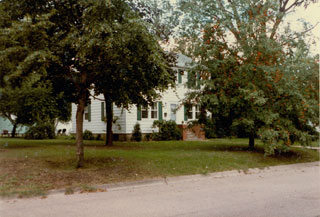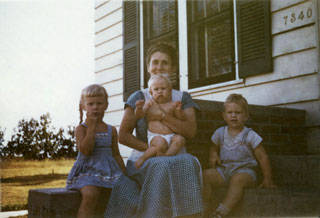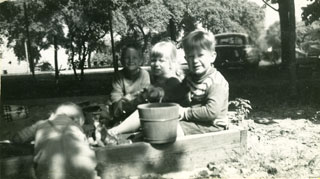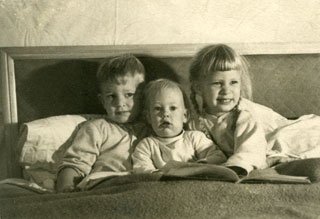Emily Day: A Bigger House
The post-war housing crisis prompted many families to seek homes further out from city centers. Emily Day and her husband had three children by 1949 and wanted to find a larger house. They were lucky enough to find just the house they needed in Richfield, just south of Minneapolis. In an interview with historian Thomas Saylor, Mrs. Day described those early years in the rising suburb.
Audio
Transcript
TS: Now, when you thought of moving to Richfield . . . how did you envision Richfield when you and your husband talked about moving to Richfield? What did that mean?
ED: Well, in the first place we were just mostly looking for any place to live. We wanted to stay in the Minneapolis side because that’s where we had both been living before. We didn’t want to go on the St. Paul side. He came from Farmington. So we wanted to have a place that was available to the south side of the metropolitan area. But we mostly wanted to find a place that would be big enough for us because by then we had three children and we needed to have a bigger house.
TS: Now, when you moved in, there wasn’t much around here.
ED: That’s right. There wasn’t any thing around here. There was a little basement house across the street. Meaning that to get into it you had to go downstairs to get into the basement. And then there was another house across the street down the block. On our side of the street there was just one other little really tiny house on the back of the lot by the alley. That was about halfway down the block. And then the street itself only went as far as what would be 73rd Street. But it was a dead end. There wasn’t any 73rd Street. And the other side of the dead end there was a farm, and as my daughter remembers, the plow was going back and forth. Then on the other side, on the south side of our house where 74th Street goes along, there was another farm and there was a big field that a man was plowing back and forth on that farm. So we were kind of between two farms.
TS: Between two worlds, really, of the beginnings of this development and farms on the other side. So you really could find yourself almost on the border between those two.
ED: Absolutely. We were right on the border. And very soon 73rd Street was cut through. I mean within a few years. And then the lots on the 74th Street side began selling. But the lots on our little street here, on Clinton Avenue in this block, they sold so fast. Within a few years. I'm sure by maybe 1950 or '51 most of the lots along this block were already sold.
TS: And the construction came with it pretty quickly.
ED: It came immediately.
TS: I see a bunch of Cape Cods. Little boxes across the street here. ...What kind of people do you remember moving into those houses, Mrs. Day?
ED: Well, they were people who had been in the war. Most of them. The man across the street, and he still lives there, he still has his flag out. He was in the war in the Asian part. He is a very nice guy. His family is all moved out but he’s still there. I think he must have come in about 1951 or 1952, something like that. And the others on all four corners then were all about the same age. Across 74th Street now they came in and they were all the same size. This one, he had been in the war and he ran a gas station. And over there, kitty corner from our lot, he had been in the war, too.
TS: So people about the same age demographic.
ED: Oh, yes. ...On the other side of the alley there was another house and it was a basement house. But then in a few years they got enough money to build a house above ground. We used to take care of each other’s kids. On Thursday was her day off. On Tuesday I got a day off. So everybody took care of each other’s kids.
TS: Were there a lot of kids in the neighborhood?
ED: Oh, lots of kids. Many. There were no fences at all between any of the lots. Ever. And they ran between one yard and the others all over. My daughter just told me yesterday she remembers playing for six hours outdoors without ever seeing an adult.
TS: So there were lots of kids for your own kids to play with, and you had four children living in this house.
ED: Yes.
TS: ...Over the years you’ve stayed in Richfield. You and your husband stayed here. You’re here now. Why did you never leave? Why are you still here?
ED: Because I really believe in community. I believe that neighbors make people. I know that I will have to, if I become unable to take care of myself, go into some kind of a place where somebody will take care of me. But, if possible, if we can all learn from each other and be part of each other in a real neighborhood, that’s an ideal.





Source
Day, Emily; Thomas Saylor, Interviewer, Richfield Oral History Project, Minnesota Historical Society Oral History Collections, 2007.


